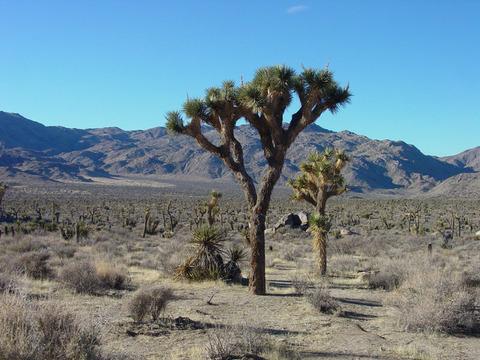In what could be a sign of what's to come, a court has blocked Wal-Mart from building a Supercenter near Joshua Tree National Park because the company did not adequately consider its greenhouse-gas impacts.
The ruling was handed down Thursday by a San Bernardino County Superior Court judge in response to a lawsuit filed by the Center for Biological Diversity.
“The court agreed that Wal-Mart broke the law by refusing to even consider common-sense measures to reduce the greenhouse gas footprint of its latest big-box store,” said Matt Vespa, senior attorney with the Center’s Climate Law Institute. “California law requires consideration of greenhouse emissions and other environmental impacts from new development, and it is only fair that Wal-Mart comply with this important requirement.”
The lawsuit is one of a series of court challenges brought by the Center to reduce greenhouse gases from new development through the California Environmental Quality Act. The Act mandates that where an environmental impact is determined to be significant, all feasible mitigation measures must be adopted to substantially lessen the impact.
While this lawsuit was specific to California, as efforts continue across the country to minimize greenhouse gases, how long might it be before other states pass similar laws requiring businesses to reduce their carbon footprints?
According to the Center for Biological Diversity, Wal-mart, in its environmental review for the proposed project, "attempted to avoid adopting feasible measures to reduce the carbon footprint of its Supercenter by determining that the project’s cumulative impact to global warming was less than significant. The court rejected Wal-Mart’s finding that the project’s impacts were not significant as unsupported and contrary to science."
Interestingly, on its corporate homepage Wal-mart touts California's efforts to generate solar power and comments that, "California is an excellent state for us to expand our use of renewable energy and thus create more green jobs."
That evidently didn't slip by Mr. Vespa.
“Wal-Mart talks a lot about fighting global warming, but when it comes to actually taking action, it bent over backwards to avoid incorporating cost-effective features like solar panels to reduce its carbon footprint,” he said. “The enormous disconnect between Wal-Mart’s stated environmental goals and its actions is classic greenwashing.”
In a release the Center says the superior court also noted that Wal-mart's environmental review "neglected measures to reduce ozone and dust pollution, and environmentally superior alternatives. The environmental study also disregarded data that the Supercenter would result in 'urban decay,' a process that causes other local stores to go out of business."
“Business-as-usual big box sprawl is devastating to our environment and communities,” said Vespa. “California law requires Wal-Mart to take stronger steps to live up to its promise to reduce significant environmental impacts like global warming.”




Comments
There is one Joshua Tree National Park. There are endless cities for Walmart.